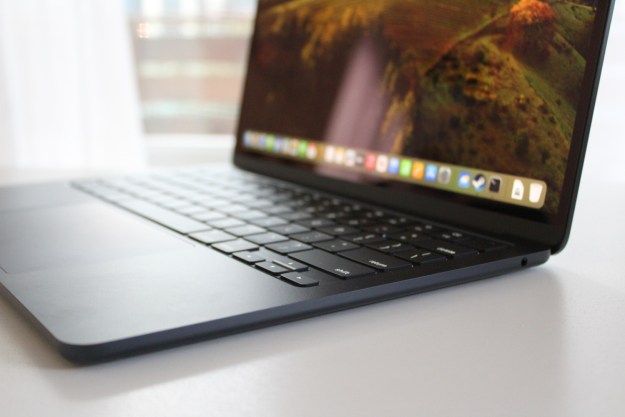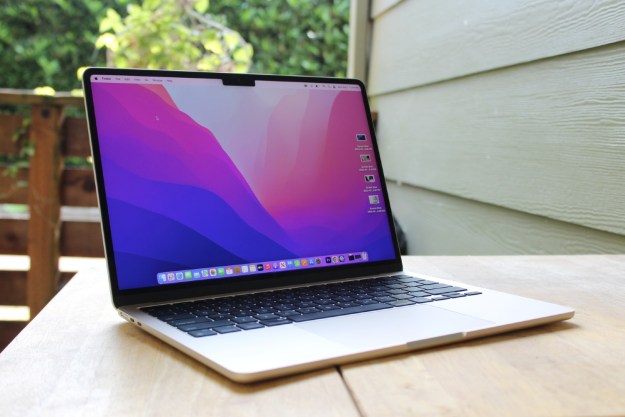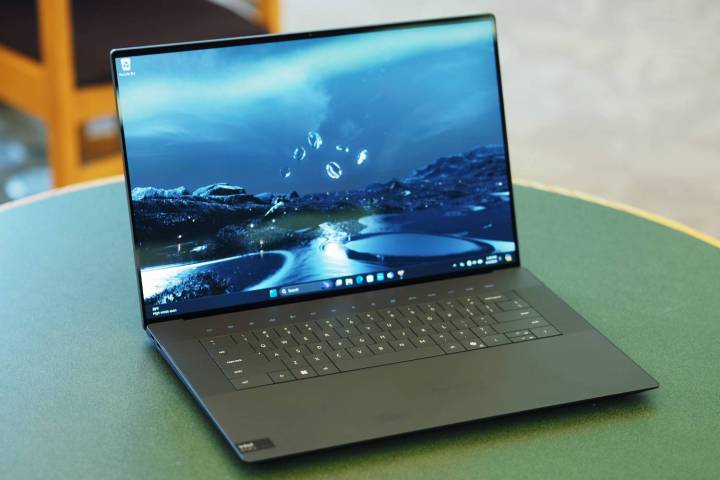
It took a few years, but Dell finally updated the design of its two largest XPS laptops. The XPS 15 gave way to the XPS 14, while the XPS 17 was replaced by the XPS 16. The latter gained the ultramodern look of the XPS 13 Plus, complete with a glass palm rest, a hidden haptic touchpad, and a row of LED function keys.
It’s a significant update but places the XPS 16 in direct competition with the Apple MacBook Pro 16. That’s an excellent matchup with proven performance and battery life and an elegant design that’s solid, if a lot more conservative.
Specs and configurations
| Apple MacBook Pro 16 | Dell XPS 16 | |
| Dimensions | 14.01 inches x 9.77 inches x 0.66 inches | 14.1 inches x 9.4 inches x 0.74 inches |
| Weight | 4.8 pounds | 4.8 pounds |
| Processor | Apple M3 Pro (12-core) Apple M2 Max (14-core, 16-core) |
Intel Core Ultra 7 155H Intel Core Ultra 9 185H |
| Graphics | Apple M3 Pro (18-core) Apple M3 Max (30-core, 40-core) |
Intel Arc Graphics Nvidia GeForce RTX 4050 Nvidia GeForce RTX 4060 Nvidia GeForce RTX 4070 |
| RAM | 18GB (M3 Pro) 36GB (M3 Max 14/30) 48GB (M3 Max 16/40) 64GB (M3 Max 16/40) 96GB (M3 Max 14/30) 128GB (M3 Max 16/40) |
16GB 32GB 64GB |
| Display | 16.2-inch 16:10 Liquid Retina XDR (3456 x 2234), 120Hz | 16.3-inch 16:10 FHD+ (1920 x 1200) IPS non-touch, 120Hz 16.3-inch 16:10 4K+ (3840 x 2400) OLED touch, 120Hz |
| Storage | 512GB SSD 1TB SSD 2TB SSD 4TB SSD 8TB SSD |
512GB PCIe Gen4 SSD 1TB PCIe Gen4 SSD 2TB PCIe Gen4 SSD 4TB PCIe Gen4 SSD |
| Touch | No | Optional |
| Ports | 3 x USB-C 4 with Thunderbolt 4 1 x HDMI 2.0 1 x 3.5mm audio jack 1 x SD Card reader |
3 x USB-C with Thunderbolt 4 1 x 3.5mm audio jack 1 x microSD card reader |
| Wireless | Wi-Fi 6E and Bluetooth 5.3 | Wi-Fi 7 and Bluetooth 5.4 |
| Webcam | 1080p | 1080p with infrared camera for Windows 11 Hello |
| Operating system | MacOS Monterey | Windows 11 |
| Battery | 100 watt-hour | 99.5 watt-hour |
| Price | $2,499+ | $1,699+ |
| Rating | 4.5 out of 5 stars | 3.5 out of 5 stars |
The XPS 16 starts at $1,699 for a Core Ultra 7 155H, 16GB of RAM, a 512GB SSD, Intel Arc graphics, and a 16.3-inch FHD+ IPS display. Upgrades are costly, such as the $1,150 upgrade to a Core Ultra 9 185H and the $800 upgrade to the Nvidia GeForce RTX 4070 GPU. Max the machine out and you’ll spend $4,549 for a Core Ultra 9, 64GB of
The MacBook Pro 16 starts at a more expensive $2,499 for an M3 Pro chipset, 18GB of
Design

The MacBook Pro 16 retains the new design introduced in 2021, with straight edges and a rounded yet blocky aesthetic that somehow still manages to come across as exquisite. The Space Gray color scheme was dropped in favor of a gorgeous new Space Black, while the same Silver color is still available. Inside, the MacBook has a traditional black keyboard flanked by large speaker grills to go with a traditional palm rest and separate touchpad.
The XPS 16 looks a lot like earlier models on the outside, with a silver lid and bottom chassis and anodized chrome accents across the sides. Open it up and you’ll find an ultramodern look complete with a glass palm rest and hidden touchpad, a keyboard with zero key spacing that also sports large speaker grills to each side, and LED touch keys in place of physical function keys.
While the XPS 16’s insides are modern, the new design features make less sense on such an expansive laptop. Many users will prefer the MacBook Pro 16’s more traditional and arguably functional components. The XPS 16 retains the tiny display bezels that are hallmarks of the XPS brand, while the MacBook Pro’s are nearly as small, but Apple used an equally controversial notch to fit everything in.
The XPS and MacBook brands have both been extremely solid in terms of their build qualities, and each machine follows suit. Both offer an excellent build that’s as solid as you can buy.
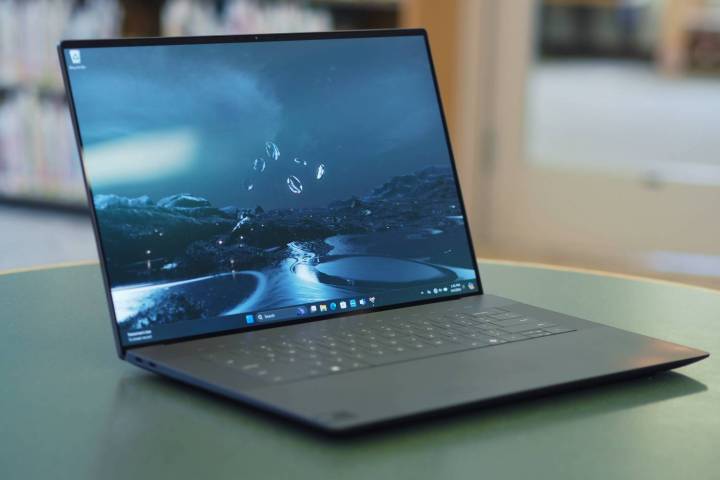
The MacBook’s Magic Keyboard is perhaps the best available on a laptop today, with large keycaps, a spacious layout, and the snappiest switches around. The XPS 16’s zero-lattice keyboard takes some getting used to, but its switches are also very good — just a step behind Apple’s.
The MacBook Pro 16’s Force Touch touchpad is also the best we’ve used, with a large, responsive surface and quick, natural haptic key clicks. The Force Click function also adds easy access to additional functionality with a slightly “firmer” press. The XPS 16’s hidden haptic touchpad is also very good, although we had to turn the haptic feedback level up a couple or notches. Again, it’s good but Apple wins.
The XPS 16 retains the minimal connectivity of the XPS 17, albeit with one less Thunderbolt 4 port and dropping a full-size SD card reader for a microSD reader. The MacBook Pro 16 offers as many
Both
Performance
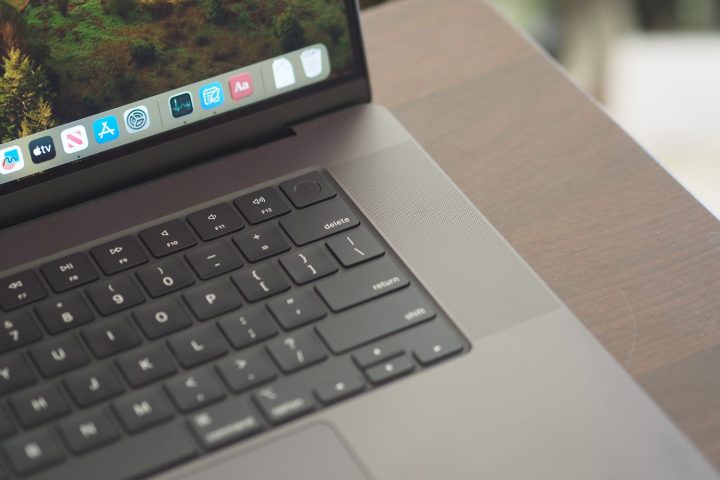
We tested the XPS 16 with the 28-watt Intel Core Ultra 7 155H with 16 cores and 22 threads and the RTX 4070. In apps like Adobe’s Premiere Pro that can use a discrete GPU, the XPS 16 will benefit from the faster GPU.
Meanwhile, the MacBook Pro 16 offers the ultrafast M3 Max chipset with up to 16 CPU and 40 GPU cores. This configuration scored one of the highest laptop results we’ve seen in the Pugetbench Premiere Pro benchmark that runs in a live version of Premiere Pro.
In our benchmark suite, the XPS 16 was very fast but no match for the MacBook Pro 16 for demanding productivity users and creators. Gamers, though, will find better performance and a vastly wider array of games.
| Geekbench 6 (single/multi) |
Handbrake (seconds) |
Cinebench R24 (single/multi/GPU) |
Pugetbench Premiere Pro |
|
| Apple MacBook Pro 16 (M3 Max 16/40) |
Bal: 3,83 / 20,653 Perf: N/A |
Bal: 50 Perf: N/A |
Bal: 140 / 1,667 / 13,146 Perf: N/A |
Bal: 8,046 Perf: N/A |
| Dell XPS 16 (Core Ultra 7 155H / RTX 4070) |
Bal: 2,196 / 12,973 Perf: 2,238 / 12,836 |
Bal: 69 Perf: 68 |
Bal: 100 / 838 / 9,721 Perf: 102 / 895 / 10,477 |
Bal: 5,401 Perf: 5,433 |
Display

The MacBook Pro 16 has an excellent 16.2-inch Mini-LED display running at 3456 x 2234 and up to 120Hz. It’s bright, offers excellent colors and deep contrast, and the best high-dynamic-range (HDR) performance we’ve seen in a laptop.
Dell offers two display options with the XPS 16, a 16.3-inch FHD+ (1920 x 1200) IPS display at up to 120Hz and a
Notably, the XPS 16’s high-end display option is touch-enabled, while Apple still doesn’t offer a touch display.
Portability
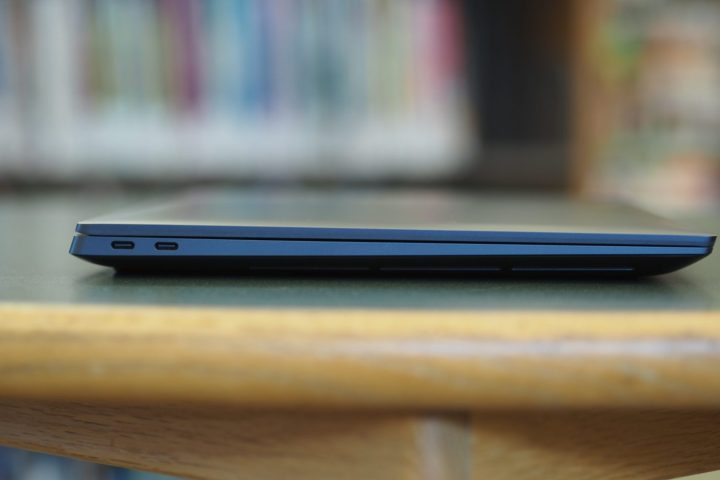
The XPS 16 and MacBook Pro 16 are similarly sized and weigh the same, while the MacBook is thinner. Both are large
However, battery life matters, and the MacBook Pro 16 is a standout performer. It lasted 19 hours in our web browsing test and 27 hours (!) in our video looping test, and in real-world use, it lasts well into a second day of reasonably demanding work. Even when performing demanding tasks like video editing, the MacBook can last a meaningful portion of a full workday.
The XPS 16 lasted just 5.5 hours in both web browsing and video, meaning it won’t last much past lunchtime even with typical workflows. The MacBook Pro 16 will last most of a full day even running demanding tasks, and it’s a different class entirely in its battery life.
The MacBook Pro 16 remains a challenging matchup
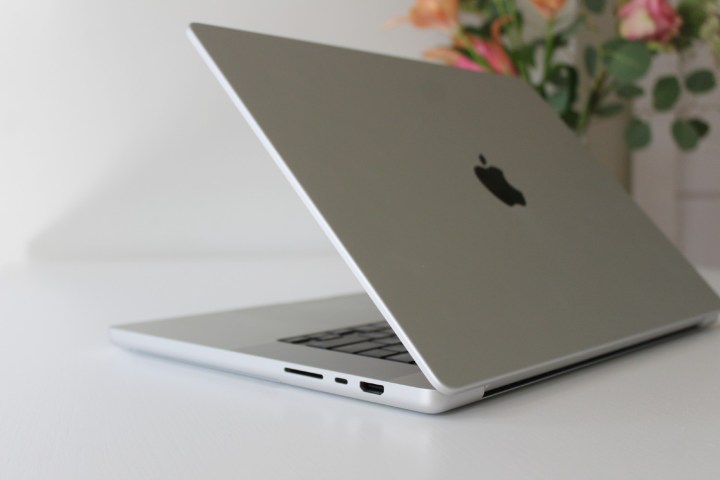
The XPS 16 is a well-built, if controversially designed, laptop with solid performance and an excellent high-res OLED display option. It’s a very competitive large-screen Windows laptop.
But the MacBook Pro 16 is so fast and lasts so long on one charge while offering an excellent keyboard, touchpad, and mini-LED display that it retains its top-place finish among 16-inch
Editors' Recommendations
- Best Apple deals: Save on AirPods, Apple Watch, iPad, MacBook
- MacBook Pro 16 vs. MacBook Pro 14: The important differences
- The best MacBook to buy in 2024
- Best laptop deals: Save on the Dell XPS 14, MacBook Pro 16 and more
- Best MacBook deals: Get an Air for $605 and save on M3 MacBook Pro

